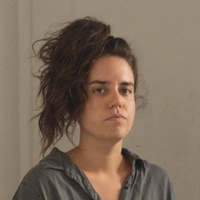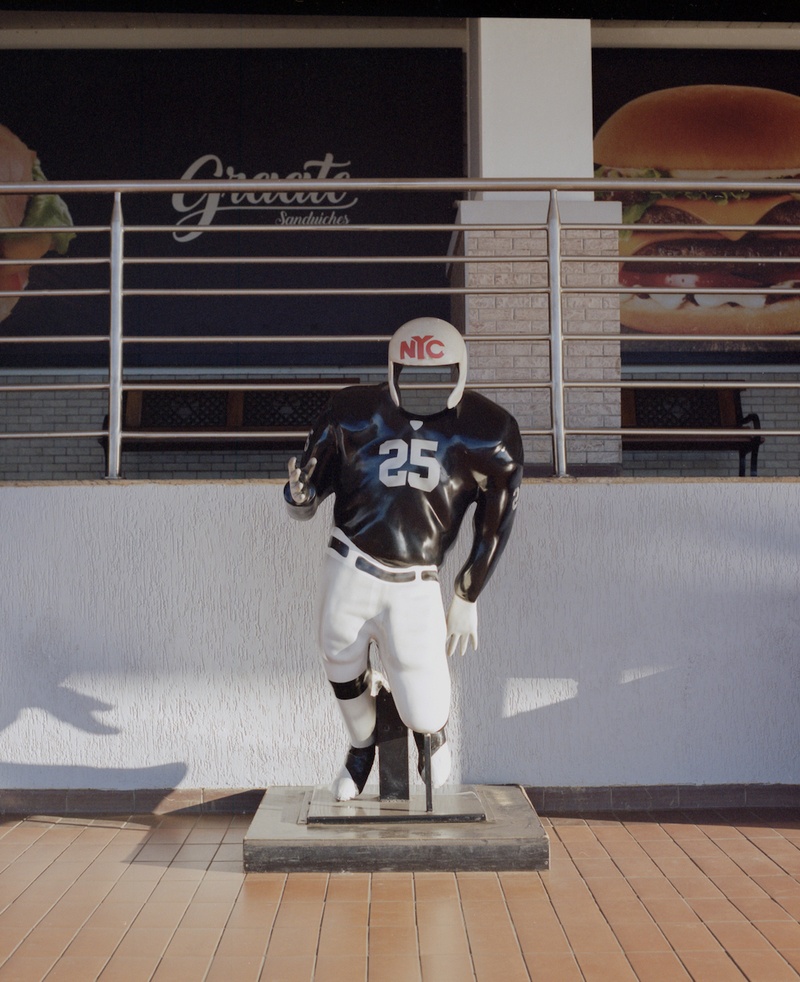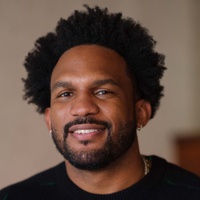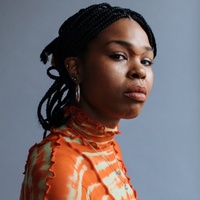As told to Grashina Gabelmann, 1536 words.
Tags: Photography, Art, Day jobs, Money, Collaboration.
On connecting your day job to your creative work
Interdisciplinary artist Camila Svenson discusses juggling your paid and non-paid work, using your everyday as your subject matter, and why all photographs are fiction.What is your creative practice?
I’m a photographer. I collect things and I walk around city so I can find things that are interesting. I always need someone else to participate in the process. So I’m always looking for people to collaborate with me. I think photography is actually just a tool to reach places and situations and people that I otherwise might not be in touch with. Photography is an excuse to go inside worlds that are not part of my life.
I also pay my bills with photography—journalism and event photography. I have a lot of boring commercial work that doesn’t make sense but somehow I can always find a way to relate to it and combine it with my artistic research.
Being able to bridge your artistic practice with commercial jobs is a great skill. How do you do it?
I actually read one of the interviews you guys published and the artist was talking about not feeling like she is an artist because she has to do other work to pay her bills. And sometimes I think I feel the same way.
I hate working as an event photographer because the events are in a very normative cis gender environment—weddings, Bar Mitzvahs or corporate meetings. But eventually I thought to myself: Since I’m already here, let me look at the place in a different light and let’s see what I can take from this place. I’ve been an event photographer for 10 years so I have a massive archive of event photography. You have to take an immense amount of photos at each event like 1000-2000 images—the more, the better. People will never look at all the photos but they need to have the option. So what can we make of photos that don’t need to exist of places related to rituals?
You have a photography collection on your website of photos taken at graduations, weddings, etc. but there you of course put them into the context of your personal work, right?
I’m still trying to select those photos, but I think it has to do with quantity and repetition—always the same birthday cake, always the same kind of location. Why we are repeating ourselves over and over? I’m going through the archive placing all the birthday cakes together, the buffet landscapes etc. to see what other patterns I can find.
Do you think your aesthetic as a photographer change when you’re taking photos at events?
No, it’s not the same aesthetic. I just press the button over and over again because I need to make a lot of photos. It’s a different way of thinking. I don’t recognize myself when I’m in these spaces.
Does it feel like you’re playing a role?
Yes it does. When you are an event photographer, you’re just a piece of furniture in the room. You need to be invisible. You need to be there and approach people but you cannot be too accessible. You can’t be too present. You just need to be a kind of voyeur, and I like that. I like that it’s the only place my body can be invisible. I don’t need a connection with the people there. I just need to walk around and photograph the food and shoes.
It sounds nice to have this very different experience when you do commissioned work. It sounds like this role playing could even be fun.
I try to play a character when I’m in these places. I think my behavior is really strange because I feel so displaced. I always feel so weird—my first feeling is I need to get out of here as soon as possible. I hate to be here. I do it to pay my bills, but since I’m already there I think: Let me see what I can do to mix these jobs with my artistic practice.
You say that with your photography, you look at love, affection, and fiction. Can you explain that further?
I used it to look at love and affection much more than I do now. When I first learned how to use a camera I was more of a street photographer. I walked around and took photos of strangers. After doing that for many years I understood that these photos don’t matter to me—I need to know who I’m photographing. I need to have a connection with these people. What is it that I can say with my photography? Then I started to photograph people close to me. I started to photograph my family, my friends, my relationships. And this approach was really far off from how I learned at university as I studied Photo Journalism. They taught us that we need to go to the most “exotic” places to find good stories. I never understood why I need to go far away to take good photos. I just started to get closer to things already in my environment. I documented my family and it’s not like I have the most amazing relationship to them; I actually don’t like being there but being there with a camera is different. Taking photos of the place I grew up in helps me understand the place more.
Does it feel like your camera protects you in situations like going to your hometown and being with your family?
Yes, it’s like wearing an outfit. I’m not just speaking to my relatives—I’m working on a project. I think it’s the reason I started documenting my family. I couldn’t be there with only my body. Things become less unbearable when my camera is with me.
Does your family get what you’re doing, do they respect it? Do they treat you differently when you’re there with your camera?
I don’t know if they understand. My mother once in a while writes me saying things like, “My friend’s daughter also likes photography and she turns her photos into fridge magnets. You could also do that to make money.” My grandma understands a little bit more. She doesn’t understand the professional part but she knows it’s important and we found a way of collaborating to each other. I ask her to pose a certain way and she does it.
You said you like to collaborate when you take photos. Can you tell me more about that?
I always start with a conversation before I start a project, before I even start researching. I usually record it but it’s a very informal dialogue. The conversation will tell me where to go, what to photograph, what to look at. To me, it makes more sense this way than to photograph everything and afterwards make a statement about something I’m not related to. The conversation is fiction so what can I do with this fiction? Where can I go with it without being violent to the subjects at hand? What are the limits of where I can take it? Working in this field of fiction gives me more freedom.
Yes. You’re not tasking yourself with portraying “the truth,” which is impossible.
There’s never truth. I think a photographer is always a liar and I don’t mean it in a bad way. Photographers are always creating fiction. They’re always changing the environment they’re photographing. There’s nothing neutral - it’s violent when you see yourself as a neutral body. You’re a body’s always responding to something you’ve experienced. You’re always taking from something.
And the subjects you interview before you start photographing are also telling you fictional stories, coming up with a narration of how they experience life.
I think that’s beautiful. What is the person offering me? What choices are they making in their storytelling? I’m not going try to get a person to talk about something they don’t want to talk about. Let’s talk about whatever you feel like talking about.
Are there subjects you feel particularly drawn to?
I don’t think my projects have a pattern but I’m always looking for things that have to do with time, death, disappearing and how cities change over time.
So you may randomly stumble across a subject matter or a person or a story and then you just start off by speaking to someone?
Yes. When I come across something I’m interested in, I think: It’s going to be nice to make fiction out of it, play with images inside this fictional narrative. When we see an image, we believe the image is real and I like to play with that. It is not reality and that’s a good thing. Thank god. Our reality is already too much—let’s go with fiction.
Camila Svenson Recommends:
To always have a notebook in your bag, to keep daily notes
The book Bluets, from Maggie Nelson
The poems from my friend Maria Isabel Lorio
The work of Jonas Van, who taught me some important things one day
To have a nearby garden, where you can go to be barefoot







